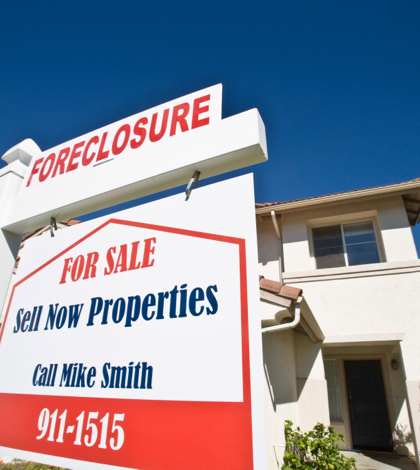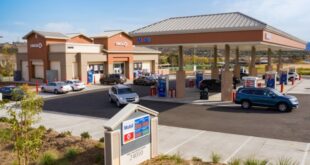Despite the housing recovery, private investors are still buying and refurbishing houses in the two-county region and often selling them for a quick profit. Some say the practice artificially drives up prices and slows the market, but the practice has its defenders.
Home flipping is alive and well in the Inland Empire.
More than 1,500 single-family homes were flipped in San Bernardino County between April 2013 and March of this year, according to RealtyTrac, a real estate information service and online marketplace for distressed properties.
That made San Bernardino County the ninth-ranked county in the United States for the flipping of houses, i.e. purchasing a foreclosed or otherwise distressed house from a bank for a below-market price, somehow increasing its value and selling it for an immediate profit.
The practice, also known as investment buying, was even more common in Riverside County during that 12-month period: 1,728 home were flipped there during that time, ranking it seventh among counties nationwide for quick home sales, according to Irvine-based RealtyTrac.
Home flipping has always been around, but it became rampant in the two-county region when the recession hit in 2007-’08. Prices fell through the floor, and investors took advantage of the sagging market: they swooped in, bought houses and restored them with no intention of ever living in them.
Flipping isn’t restricted to a bad housing market. Investment buyers can succeed when employment is up and people have more money to spend, according to real estate officials familiar with the practice.
In 2009, the Inland Empire Economic Recovery Corp. was formed. Based in San Bernardino, that private entity was formed specifically to buy, restore and sell foreclosed and other distressed properties in both counties.
It’s goal was to keep property values up by preventing blight in Inland neighborhoods, and it has largely succeeded: it has bought and sold more than 140 homes since it was formed, while doing much of its work on the west end of the Inland region and in the High Desert, according to the company’s website.
But critics of home flipping see the practice differently. They say it reduces the supply of affordable homes, drives up prices and ultimately keeps people – especially first-time buyers who often don’t have much money to spend – out of the market.
At the height of the recession, Inland economist John Husing said home flippers bore much of the responsibility for keeping the Inland housing market down, and thus shared some of the blame for keeping the region’s entire economy – which is largely driven by the housing industry – in the doldrums.
Today, with the local housing market improved but still struggling to find its footing, Husing has not changed his tune.
“It drives up prices, no question about it,” Husing said. “It can be very destabilizing. It got so bad [during the recession] that a lot of realtors were overwhelmed by all the investment buyers. Historically, it’s one of the things that’s hurt the San Bernardino housing market. San Bernardino is the poster-child for house flipping.”
Not everyone sees home-flipping as a major cause of the recession, or even a threat to the housing market. By restoring houses, investment buyers put a lot of good housing product back on the market and improve neighborhoods in the process, said Steve Johnson, director of the Southern California office of Metrostudy.
“Some of the improvements are cosmetic, but most of them are pretty thorough,” Johnson said. “It’s like antique cars. People fix them up and sell them for a higher price, because when they’re fixed up they’re worth more.”
Investment buyers can also help reestablish a benchmark for prices during an otherwise slow market, said Johnson, whose office provides housing data to investors, private companies and public agencies.
Johnson acknowledged that home-flipping isn’t universally popular, but said it’s preferable to seeing homes end up in the hands of a real estate investment trust.
“I don’t see house-flipping as doing a lot of damage to the market,” Johnson said. “It’s part of the system, something that happens when people start losing their houses, and there’s no way you could ever get rid of it. I’m just surprised there is still so much of it going on while the market is improving.”
One reason it’s going on is that, done correctly, flipping a home can be very profitable. During the first three months of this year, home-flippers nationwide reported a 30 percent on their investment, one of the largest returns in years, according to RealtyTrac.
Investment buyers spent an average of $183,276 to buy a home and sold it for an average of $238,850. In some markets investors were able to get double their purchase price, RealtyTrac found.
The median refurbishment price per home was $4,800, although those costs can vary dramatically depending on the size and location of the home. Just under four percent of all single-family home sales in the United States during the first quarter of this year were investment sales, according to Realty Trac.
In California, 66 percent of the state’s investment buyers said they are following a long-term investment strategy, while 26 percent said they plans to sell their properties quickly, according to a survey on home-flipping released in May of last year by the California Association of Realtors.
Most investors in the survey fell into the “mom and pop” category, meaning they owned no more than 10 properties. Fifteen percent said they owned only one property, 46 percent said they owned two to five properties and 14 percent reported owning six to 10 properties, according to the survey.
The median sale price of an investment property was $272,500, with a 14 percent median rate return on investment.
Investors buying distressed properties from banks isn’t nearly as common in the Inland region as it was four years ago, said Carlos Rodriguez, chief executive officer of the Baldy View chapter of the Building Industry Association of Southern California.
“When the market was floundering there was a lot of activity but I would say that lately it’s taken a hit,” Rodriguez said.
 IE Business Daily Business news for the Inland Empire.
IE Business Daily Business news for the Inland Empire.


